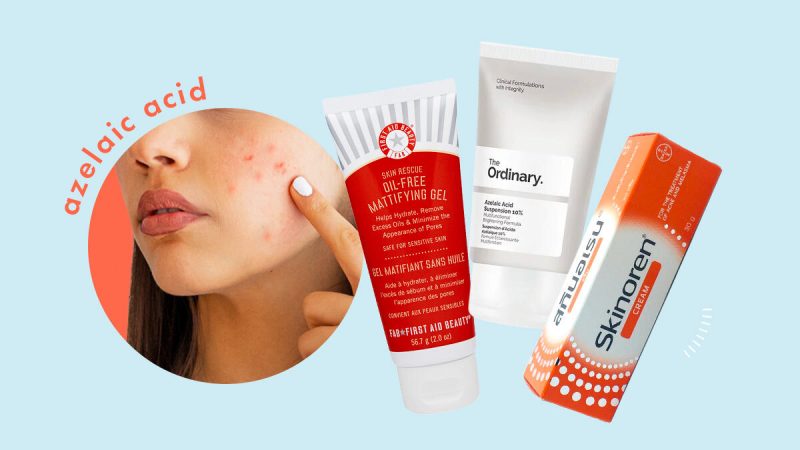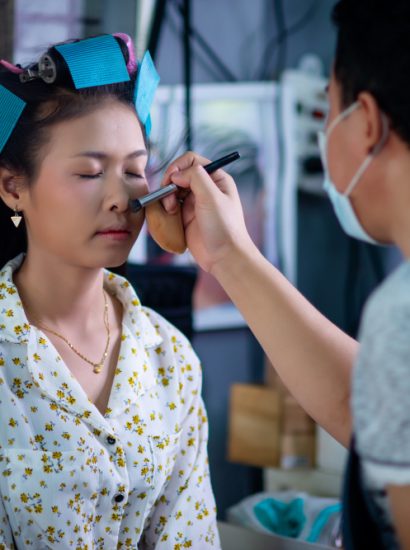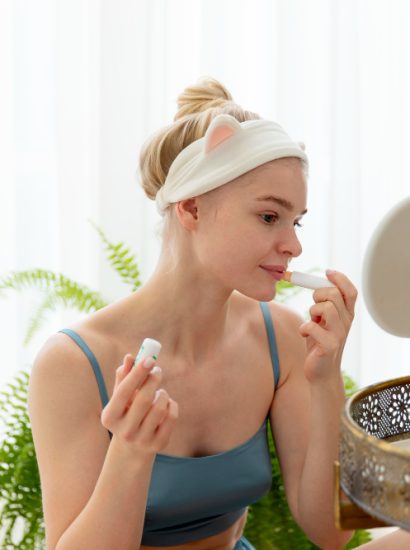Azelaic acid is a powerhouse ingredient that’s been gaining attention in the skincare world—and for good reason. Whether you’re struggling with acne, hyperpigmentation, rosacea, or uneven skin tone, this dermatologist-recommended compound offers a multitude of benefits. If you’re curious about how azelaic acid works and why it deserves a spot in your skincare routine, this article has everything you need to know.
What is Azelaic Acid?
Azelaic acid is a naturally occurring acid found in grains like barley, wheat, and rye. It’s also produced by the yeast Malassezia furfur, which lives on normal skin. However, for cosmetic and medical purposes, azelaic acid is usually synthetically derived to ensure stability and purity.
Azelaic acid is classified as a dicarboxylic acid, and it’s primarily used in dermatology for its antimicrobial and anti-inflammatory properties. It is available in various strengths—typically 10% in over-the-counter (OTC) formulations and up to 15–20% in prescription treatments.
How Does Azelaic Acid Work?
Azelaic acid works in multiple ways, making it a versatile treatment for several skin concerns:
- Antibacterial action: It targets Propionibacterium acnes (P. acnes), the bacteria responsible for acne breakouts.
- Keratin regulation: Azelaic acid normalizes the shedding of skin cells, helping to prevent clogged pores.
- Anti-inflammatory: It reduces inflammation, making it ideal for conditions like acne and rosacea.
- Tyrosinase inhibition: It blocks the enzyme responsible for melanin production, helping fade hyperpigmentation and dark spots.
This multi-pronged approach makes azelaic acid an excellent option for individuals looking to treat multiple skin issues with one ingredient.
Key Benefits of Azelaic Acid
Azelaic acid offers several science-backed benefits for various skin types and concerns:
a. Acne Treatment
Azelaic acid is well-known for its acne-fighting properties. It clears up existing pimples and prevents new ones from forming by reducing bacterial growth and decreasing the production of keratin that can clog pores.
b. Hyperpigmentation and Melasma
Thanks to its ability to inhibit melanin production, azelaic acid is effective in treating post-inflammatory hyperpigmentation (PIH), melasma, and other discoloration issues. It brightens the skin without causing irritation, unlike some harsher treatments like hydroquinone.
c. Rosacea Relief
For those with rosacea, azelaic acid can reduce redness and the appearance of papules and pustules. It’s often prescribed in gel form (typically 15%) specifically for this purpose.
d. Skin Texture and Tone
Regular use of azelaic acid can improve overall skin texture and tone, leading to smoother, more even-looking skin. It’s also non-comedogenic, which means it won’t clog pores.
Who Should Use Azelaic Acid?
Azelaic acid is suitable for all skin types, including sensitive, oily, and acne-prone skin. It’s particularly useful for:
- People with mild to moderate acne
- Those dealing with rosacea-related inflammation
- Individuals with uneven skin tone or hyperpigmentation
- Pregnant women looking for a safer alternative to retinoids or hydroquinone
Unlike many acids (like glycolic or salicylic acid), azelaic acid is gentle and less likely to cause irritation, making it ideal for sensitive skin or first-time acid users.
How to Use Azelaic Acid in Your Skincare Routine
Integrating azelaic acid into your skincare routine is relatively straightforward:
a. Cleanser → Toner → Azelaic Acid → Moisturizer → Sunscreen
Apply azelaic acid after cleansing and toning but before moisturizing. It can be used in both morning and evening routines, but if you’re using it in the morning, be sure to follow up with SPF 30 or higher, as azelaic acid can make your skin more sensitive to the sun.
b. Dosage and Frequency
Start with a pea-sized amount applied to clean, dry skin. Begin by using it once a day and gradually increase to twice daily as your skin builds tolerance.
c. Mixing with Other Ingredients
Azelaic acid pairs well with most ingredients, including niacinamide, hyaluronic acid, and retinol. However, to minimize irritation, avoid layering it directly with other strong acids (like AHAs/BHAs) unless guided by a dermatologist.
Side Effects and Precautions
While azelaic acid is generally well-tolerated, some users may experience mild side effects, especially during the initial weeks of use. These can include:
- Mild stinging or burning sensation
- Dryness or peeling
- Itching or redness
These symptoms are usually temporary and subside as your skin adjusts. However, if you experience persistent irritation, discontinue use and consult a dermatologist.
Tip: Always do a patch test before using a new product to check for any allergic reaction.
Choosing the Right Azelaic Acid Product
There are numerous azelaic acid products on the market, and the right one for you depends on your skin type and concerns. Here’s a quick breakdown:
a. Prescription Options (15–20%)
- Finacea Gel (15%) – Often prescribed for rosacea.
- Azelex Cream (20%) – Typically prescribed for acne and pigmentation.
b. Over-the-Counter (OTC) Products (5–10%)
- The Ordinary Azelaic Acid Suspension 10% – Affordable and widely used.
- Paula’s Choice 10% Azelaic Acid Booster – Includes additional antioxidants and soothing ingredients.
- Naturium Azelaic Topical Acid 10% – Combines azelaic acid with niacinamide for enhanced results.
When choosing a product, look for ones that are fragrance-free, non-comedogenic, and ideally formulated for sensitive skin.
Conclusion
Azelaic acid is a multitasking ingredient that addresses a wide range of skin concerns—from acne and rosacea to dark spots and dullness. Its gentle yet effective nature makes it an excellent addition to most skincare routines, particularly for those seeking a more even, radiant complexion without the risk of harsh side effects. Whether used alone or alongside other active ingredients, azelaic acid has the potential to transform your skin with consistent use.
FAQs
1. Can I use azelaic acid with retinol or vitamin C?
Yes, you can. Azelaic acid works well with both, but if you have sensitive skin, alternate their use or consult a dermatologist to avoid potential irritation.
2. Is azelaic acid safe during pregnancy?
Yes, azelaic acid is generally considered safe for use during pregnancy and is often recommended as an alternative to ingredients like retinoids and hydroquinone.
3. How long does it take to see results?
You may start to see improvements in acne and pigmentation within 4 to 8 weeks, but full results can take up to 12 weeks or longer with consistent use.
4. Should I moisturize after using azelaic acid?
Absolutely. Azelaic acid can cause dryness, so following up with a hydrating, non-comedogenic moisturizer is important to maintain skin barrier health.
5. Can I use azelaic acid every day?
Yes, azelaic acid is gentle enough for daily use, and some people use it twice a day. Start slowly to assess your skin’s tolerance and increase frequency as needed.
Also read: Cleansing Water: 10 Must-Know Benefits for Clearer Skin





